In the beginning of all my art classes, I start with non-conventional drawing, which is based on the book ' Drawing at the right side of the brain by Betty Edwards. Because I believe these are powerfull tools for everyone who want to learn to draw, people who love to draw or even convince people, who believe they have no talent, they can actually draw.
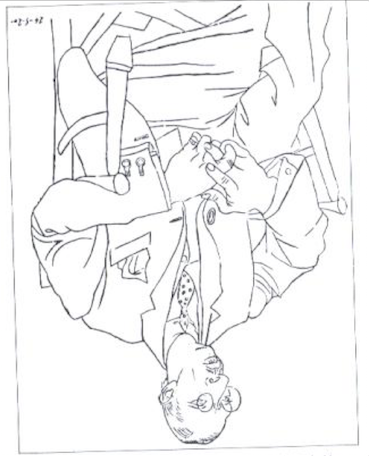
'Igor Stravinsky' by Pablo Picasso
Everyone can draw!
Many people are believing they can't draw, while we all have made many drawings as a child.
What exactly happens, when we grow up, we lose the game of drawing?
Why can't we draw anymore, just for the fun to draw? Without it should propose something!
Everything depends on what you expect from your efforts. The stumbling block often lies in the fact that we want to draw perfectly to perception. But for that, it's important to have a minimum of technical knowledge. Such as perspective drawing, light and shadow, etc. .. And that is a study on itself.
And when we are not drawing to perception, we want to make a drawing from our fantasy and memory. With the ultimatum, we force ourselves, that the picture we made in our head in advance, had to be the exactly image we want to draw on paper. All these aspects gives us more frustration and demotivation than it's good for us. Because we can't handle our fails and give up easily. But we should notice that even the most experienced artist never can draw exactly what he consider in advance. Because the image is very volatile, we can't stick such as, for example, a picture of a movie can freeze. We can call it only in thought again, but even then the image no longer exist as we had it first in mind. So for that matter is it a lost cause!
To get the hang of it, there are two very important aspects:
1. Sharp observation and accurate registration
2. Practice, practice... and practice more.
Sharpen your perception
Should it always suggest or represent something?
Must it be nice and beautiful?
The answer to both questions is short and to the point; No!
When I draw to draw (Just because for the fun of it ) the act is more important than the results. And whether it is beautiful or not, it isn't of any importance. It's more importent to be able to make some interesting drawing.
One of the most important keys to learn how to draw, is perception.
We are conditioned in the way we look at things. We look., but when you want to learn how to draw, you must learn to observe.
Following excercises are helping to reprogram that conditioning into a new 'look mode.' The experiences that are gained are directly applicable in any following drawing to nature or observation.
The more often you do these exercises, the more benefit will get and the faster you will progress.
That's so in everything – practice makes perfect-
Before we start ..
Amenities:
1. Four sheets of paper (A4 size)
2. Pencil
3. Sharpener
4. Stick or twig (minimum 25cm)
5. Tape
Every exercise has an specific duration and that's an important part of the exicise.
So, if you're praticing, set an alarm and be honest with yourself. Stop drawing directly when the time has passed. Not even a last detail or line! The time pressure helps to think less and do more.
Just look-register-look sharper- register - look- ...
It's also very important that you see the results as traces of an experiment and has no intent to create works of art. just let go, don't think, go with the flow and have fun. It's a means to draw lessons from what you are doing. You'll make your masterpieces when the time is right!
Before I start with this series, I leave my students to dance and/or do warm-ups first. And that might look banal, but I know from experience that people are calmer and more focussed when they have cast off everything first. It's a way to draw less jerkily!
So, to show that I'm serious about this, I've already selected a hearty tune:
Ok?
Blown off some steem? ;)
GOOD!
Time to start.
Six playfull exercises to win back your childish joy for drawing.
For all these exercises we rotate our example upside down.
It goes without saying that you can use any photo as the basis for the exercises. Just make sure it's a clear picture and black white is the most suitable.
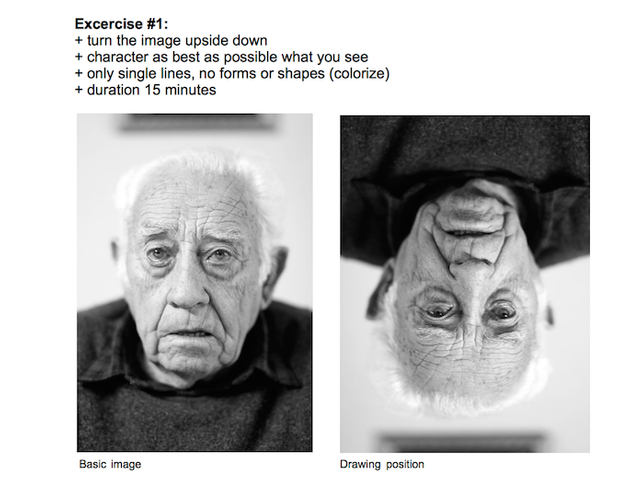
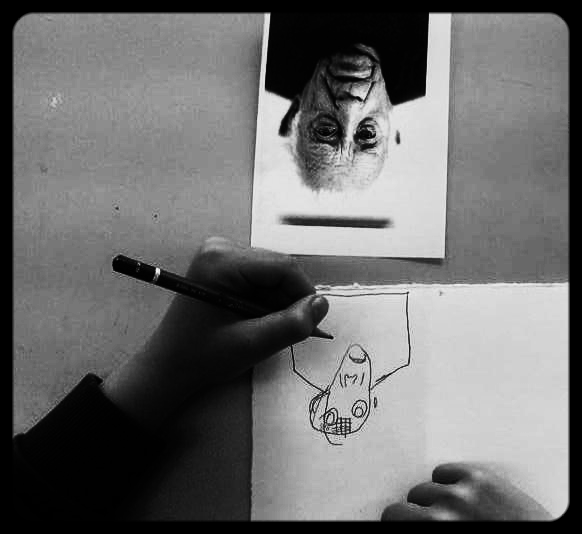
It's a small application that let us look more formal instead of to the content. And with formal I mean; forms, lines, shapes, restforms, structure, proportions etc. ..
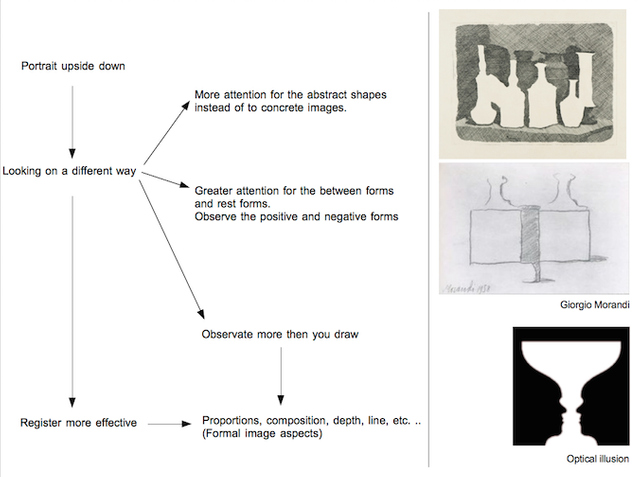
As you see in the first examples of Giorgio Morandi's etchings and sketch, he focuses on the overall shape of objects and accentuates the spacing (in the second image) and makes it a master form.
You can also look at this portrait. For example, between nose and ear, between eye and eyebrow or between nose and lower lip there are al subforms. Every main shape (eye, ear nose, etc. ..) are linked to intermediate forms.
It helps when you look with your eyes half squeezed. Like we look at optical illusions, to see two shapes.
Ideal to use in this exercise!
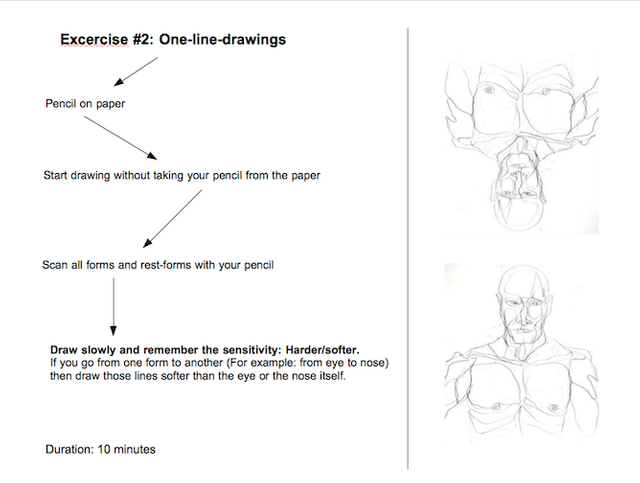
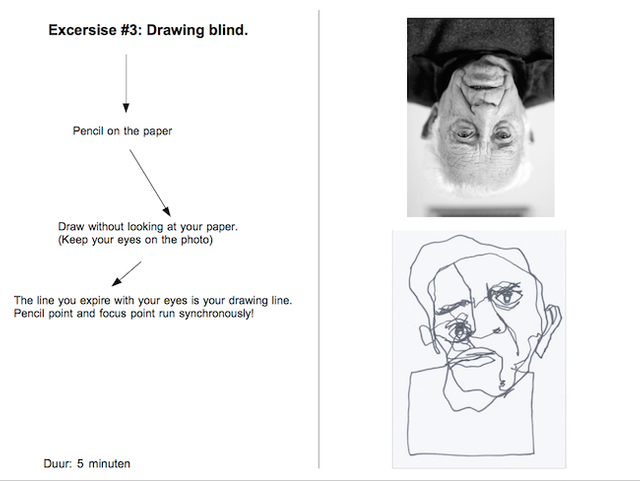
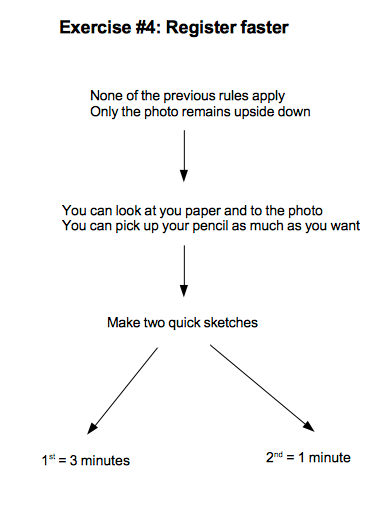
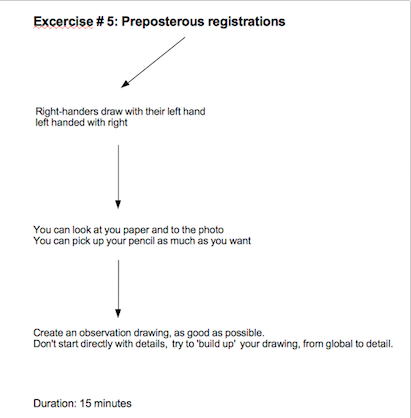
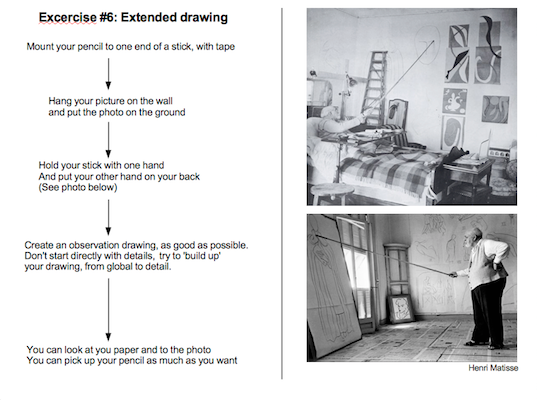
There are several well known artists who have applied these methods in their oeuvre. Henri Matisse (the examples in the last slide) has discovered and developed his style through his restriction. By chronic illness, he was often bedridden and couldn't draw on large format. Therefore, he devised the extension with which he could draw on a distance.
George Baseltz is a different example. Baselitz is best known for his monumental 'on-his-head'-paintings, in which he literally takes the first exercise as a starting point for all his canvases.
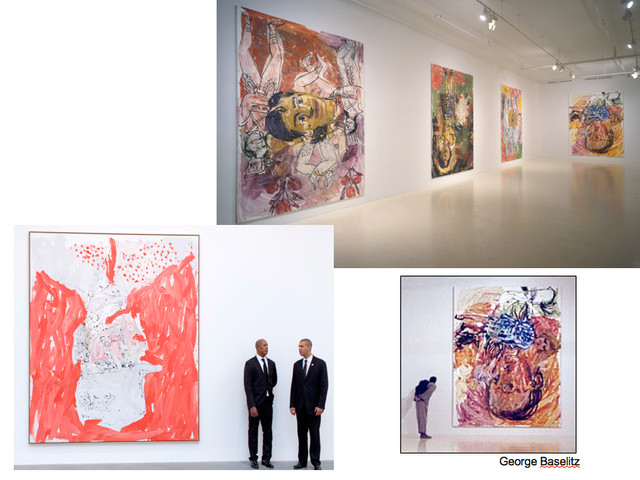
I notice that this approach, to learn how to draw, is applied too little in practice. And that's a pity, because it's a fun way to learn. And everyone who wants to be better in the art of drawing... this is the way that really teaches you how to observe and draw. And I am living proof!
So, try it yourself, experience ... PLAY and have fun!
Warm regards,
@romaan-namoor
P.S.: The slides are parts from my ppt presentation, which I use in my classes.
#art #education #non-conventionaldrawing
nice info
Downvoting a post can decrease pending rewards and make it less visible. Common reasons:
Submit
I will have to try this sometimes.
Downvoting a post can decrease pending rewards and make it less visible. Common reasons:
Submit
Great!
Downvoting a post can decrease pending rewards and make it less visible. Common reasons:
Submit
I would love to know how to draw, but I can hardly draw a straight line, not to mention a portrait. I will have to practice thousands of years before I would draw like a professional, sometimes people are born with that talent.
Downvoting a post can decrease pending rewards and make it less visible. Common reasons:
Submit
Talent is not everything @profitgenerator ... the sentence, will and perseverance are much more important, according to me. As you've read this, it's all about the childlike fun of drawing, that is independent of any forecast in result.
And it makes little sense to try to draw a straight line with the free hand, if you can use a ruler for that... :)
Thanks for your reaction!
Downvoting a post can decrease pending rewards and make it less visible. Common reasons:
Submit
Thank you for taking the time to express this art lesson in a way that opened my eyes. A lesson that truly inspired me to want to draw again lol. I will take your advice and practice. I love art. I can draw a little. But never put much effort into it because I figured I'm no artist. Lol. I take art and do decoupages on cigar boxes . But with your brief assignment I will, one day draw my own art on my boxes. Thank you for your time... Wishing good health and prosperity.
Downvoting a post can decrease pending rewards and make it less visible. Common reasons:
Submit
That's great to read @hempgirl and truly my pleasure! It's always nice if one can inspire another...
Do you have any examples (photos) of your cigars boxes ... you got me wondering now! Maybe you could write a blog about that... just a thought!
Warm regards.
Downvoting a post can decrease pending rewards and make it less visible. Common reasons:
Submit
These are fun and very helpful exercises.
Downvoting a post can decrease pending rewards and make it less visible. Common reasons:
Submit
They are indeed... It's learning by playing ;)
Downvoting a post can decrease pending rewards and make it less visible. Common reasons:
Submit